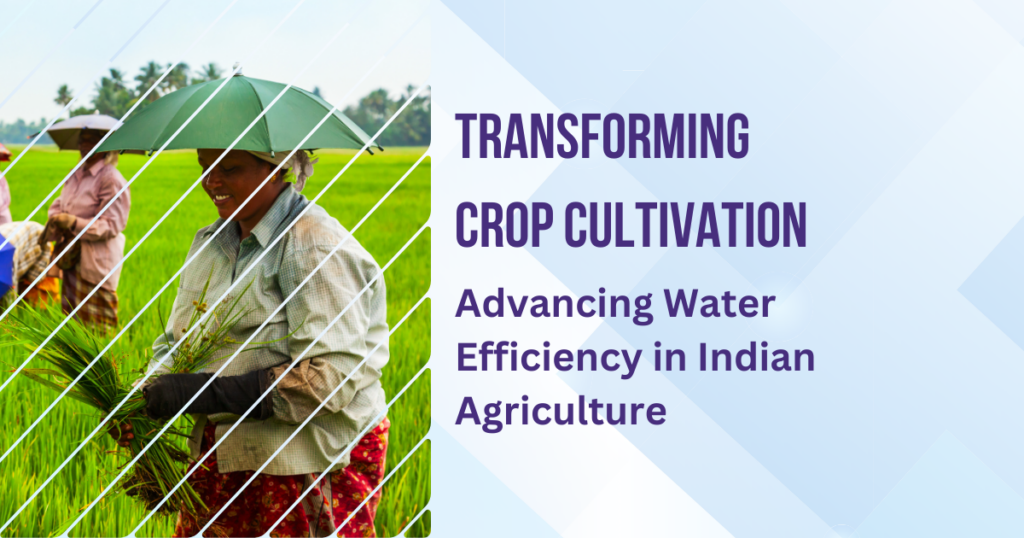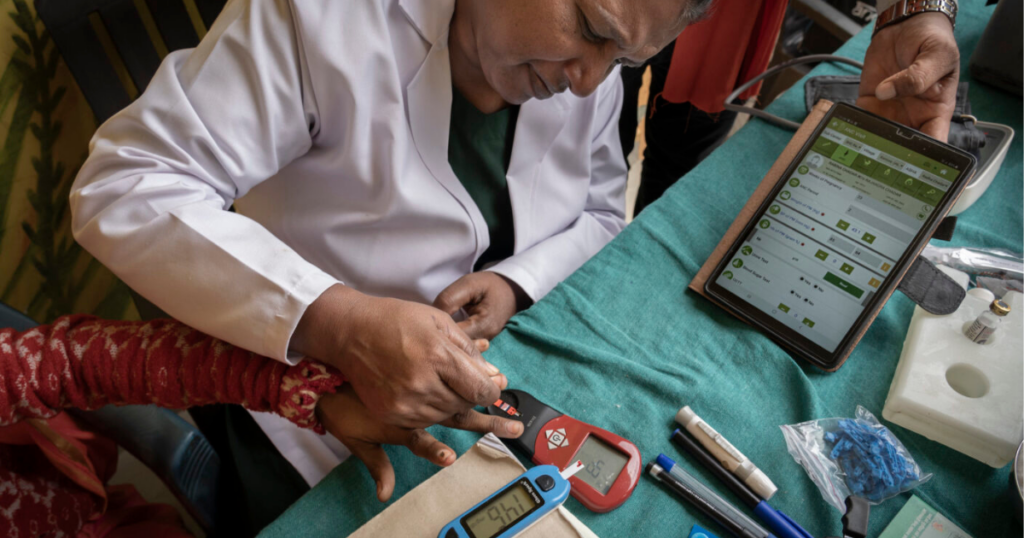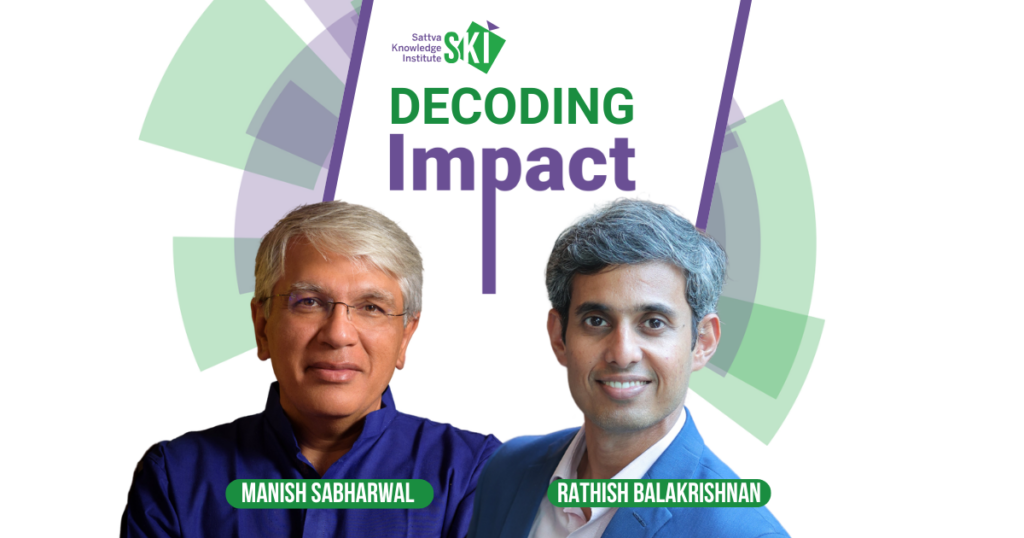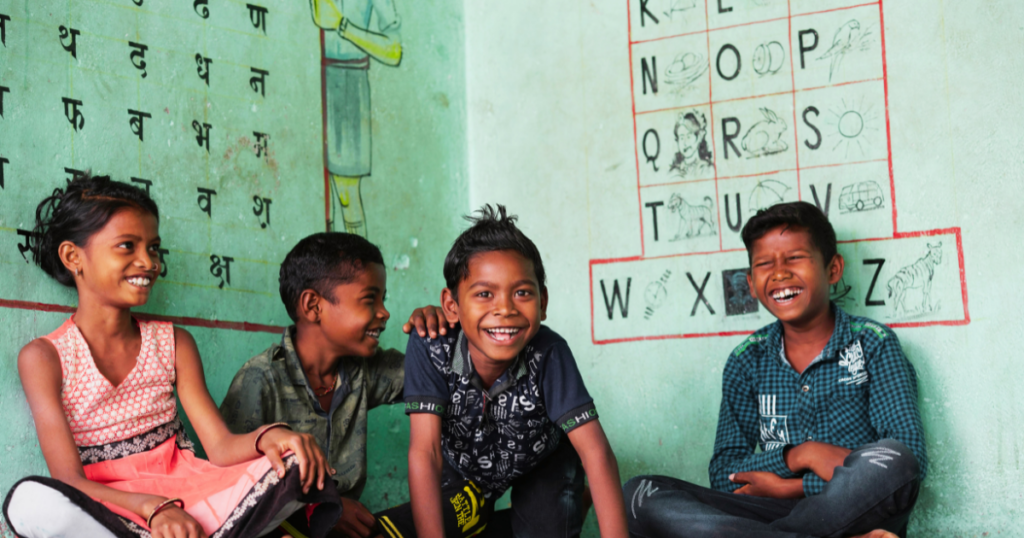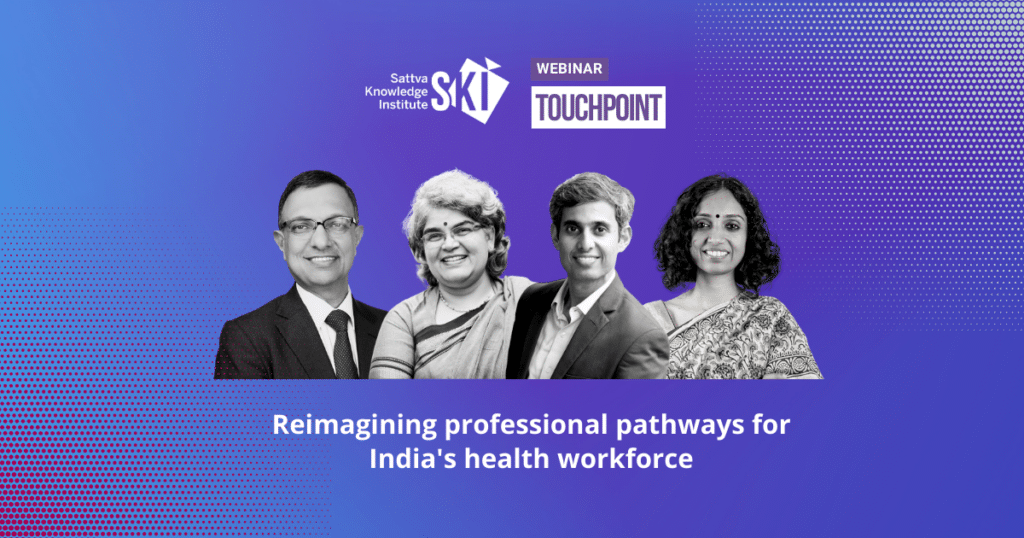This report has been created by the Sattva Knowledge Institute in collaboration with the DCM Shriram Foundation. It synthesizes insights from more than 50 public reports and over 40 sectoral experts to present three focused, actionable recommendations to scale water efficiency in agriculture.
India is considered to be one of the most water-stressed countries in the world. The crisis is compounded by the country having 17% of the world’s population, but only 4% of the freshwater sources. In an agrarian country like India, water and agriculture are intrinsically linked, with 90% of water withdrawals stemming from excessive agricultural usage. Evolving the sector to avert the impending water crisis is critical at this juncture, especially in the cultivation of certain water-intensive crops.
In Punjab and Haryana, more than 25% of the designated districts cultivating rice have very low groundwater levels, exacerbating water depletion in these regions. Additionally, sugarcane cultivation, contributing 1.1% to India’s agricultural GDP, further aggravates water depletion, particularly in Maharashtra, Karnataka, Uttar Pradesh, and Andhra Pradesh.
While various water-saving techniques exist, challenges hinder their widespread adoption. Root causes of the water crisis include invisible water pricing, a lack of market support for water-efficient crops, on- and off-farm water losses, and inadequate scaling of water-efficient conservation techniques. There are also certain barriers to adoption, including a lack of customisation, awareness, financial constraints, misplaced incentives, and resistance to change. Critical levers to scale existing techniques include prioritising farmers’ economic benefits, ensuring sustained access to resources, and addressing capacity and information gaps. Collaboration among stakeholders is essential for addressing the water crisis
comprehensively.
Today, efforts to improve water-use efficiency in rice and sugarcane cultivation involve multiple programmes and initiatives driven by industry, government, and philanthropy. Government policies are aiming to promote water conservation, industry leaders are implementing programmes to enhance farming practices, and multilateral organisations are supporting projects to improve water management.
In spite of significant efforts, there are notable gaps hindering greater impact, including over-reliance on philanthropic funding, limited scalability of initiatives beyond pilot projects, and inadequate collaboration among stakeholders. Moreover, challenges persist due to insufficient data for informed decision-making and low adoption rates of proven technologies.
To overcome these barriers it is necessary to integrate science and data into decision-making processes of stakeholders, cater to the regional localised needs of ecosystems, and convene industry stakeholders effectively to make commitments that drive intent and action.
As a way forward, this report shares three key ideas focusing on how to enable and scale existing innovations by:
- Building a public recommendation engine that can recommend techniques and practices
contextualised to local agricultural ecosystems. - Combining scientific knowledge with existing on-ground implementation and effectively establishing a water-positive framework or index for decision-making.
- Developing a model for collaborative action among industry stakeholders towards water-use efficiency in agriculture and enabling collective learning and advocacy.
Decisively moving away from the limited, pilot implementation models, to geographically tailored programmes, that empower farmers with awareness, knowledge, and skills, could catalyse water efficiency in cultivating rice and sugarcane. Strong stewardship of these efforts by private industry and philanthropy will also be key. By enabling this kind of innovation in agriculture, the mounting water scarcity problem in India, with projections estimating a further decrease in per capita water availability by 2050, could be slowed down significantly.
